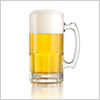 World: No- and low-alcohol drinks see double-digit growth
World: No- and low-alcohol drinks see double-digit growth
The global no- and low-alcohol beverage market continued its rise in 2024, recording double-digit volume growth in the world's ten largest markets. According to IWSR's No- and Low-Alcohol Strategic Study, the category grew by 13% last year in key countries including the US, UK, Germany, France, Japan, and Brazil. This marks another year of expansion driven by shifting consumer behaviors, increasing quality, and broader category development beyond beer, Vinetur reported on April 3.
Between 2022 and 2024, 61 million consumers entered the no-alcohol segment across these top ten markets, while 38 million were added to low-alcohol. This reflects not only an ongoing global moderation trend but also a changing perception of the category, now increasingly influenced by taste, availability, and brand familiarity. As more consumers become familiar with these products, especially younger legal drinking age (LDA) groups, the no/low space has evolved beyond a simple health-conscious choice into a dynamic part of the beverage alcohol industry.
While total beverage alcohol volumes globally are projected to grow at just 1% CAGR through 2028, no-alcohol is expected to gain share, led by its established beer segment and supported by rising interest in ready-to-drink (RTD) beverages, wine, and spirits. No-alcohol beverages are forecasted to grow at a CAGR of 7% over the same period. RTDs are expected to lead growth within the low-alcohol segment, with a projected CAGR of 17%.
The US and Brazil remain the two largest contributors to increased participation in the no/low category. From 2022 to 2024, the US added 37 million new no-alcohol consumers and 36 million low-alcohol drinkers, while Brazil recruited 13 million no-alcohol consumers. This comes as both countries see a longer-term decline in overall alcohol consumption. Full-strength alcohol volumes in the US declined at a CAGR of 1% between 2019 and 2024, while no-alcohol rose by 28% and low-alcohol by 7%.
IWSR research shows a rising trend of consumers substituting full-strength drinks with no/low options. In 2024, 30% of consumers said they would have previously consumed full-strength beverages in similar occasions, up from 2022. While no-alcohol beer remains the most developed category, participation has plateaued, whereas RTDs, spirits, and wine are gaining interest, especially among younger consumers.
Demographic patterns reflect the growing influence of Millennials and Gen Z in shaping the category. Baby Boomers and Gen X are largely associated with long-standing no-alcohol beer consumption, while Millennials have adopted a wider range of no/low products and show stronger brand loyalty. Millennials are also more likely to be frequent consumers, with 57% driven by familiarity with known brands, compared to 45% among Boomers.
As the market matures, consumer motivations are shifting. While health and moderation still play central roles, taste, availability, and branding are now essential drivers of consumption frequency. In 2024, 52% of no/low buyers cited brand familiarity as a reason for purchase, up from 48% in 2022, and 32% said taste preference, up from 28%. The perception of no/low brands is also improving: 54% of buyers described them as brands they care about, up from 50%, and 53% called them exciting, up from 48%.
Looking ahead, no-alcohol is set to lead growth across multiple beverage types. From 2024 to 2028, beer and cider are forecast to grow at 7% CAGR, spirits and wine at 7% and 5% respectively, and RTDs at 10%. Alcohol adjacents, such as functional adult beverages, are projected to expand more modestly, at 3% CAGR. Growth in low-alcohol products will be more limited outside of RTDs.
Geographically, Brazil, the US, the UK and Canada are expected to be key drivers of volume growth through 2028. In Brazil, where no-alcohol beer dominates and enjoys widespread distribution through major international brewers, the segment is likely to remain the main source of future growth. In contrast, the US will see broader expansion across all no-alcohol categories, especially among younger, brand-savvy consumers with diverse preferences.
While smaller markets like Canada and Australia present strong growth potential, the largest commercial opportunities are centered in Brazil and the US, where contrasting consumer profiles and category strengths offer a wide range of strategic avenues for producers and retailers.
Back
E-malt.com, the global information source for the brewing and malting industry professionals. The bi-weekly E-malt.com Newsletters feature latest industry news, statistics in graphs and tables, world barley and malt prices, and other relevant information. Click here to get full access to E-malt.com. If you are a Castle Malting client, you can get free access to E-malt.com website and publications. Contact us for more information at marketing@castlemalting.com .





